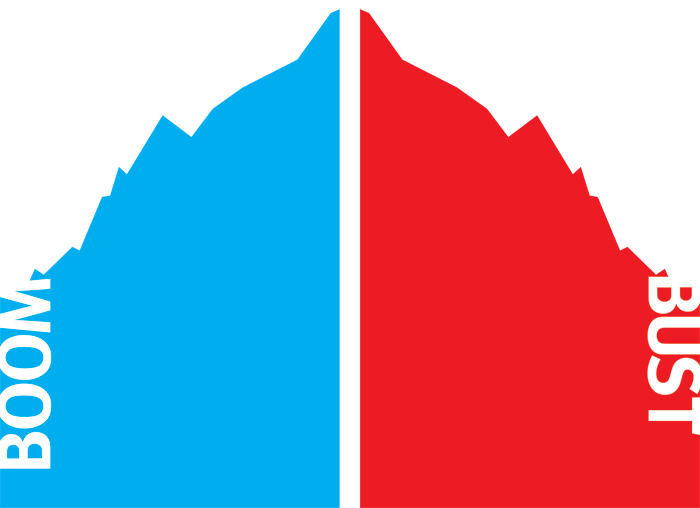"Republican Rule And Economic Catastrophe: A Lockstep Relationship"
***
Over the last decade, oil and natural gas production has been booming out West, in states like North Dakota, Colorado, and Montana. That's brought plenty of benefits to local communities: Good-paying jobs, rising incomes, new businesses, a tidal wave of fresh tax revenue.

(Michael S. Williamson/The Washington Post)
It's also brought a fair share of problems. Towns around the oil-rich Bakken formation in North Dakota, for instance, have been grappling with higher crime rates, heavy truck traffic and overcrowded schools. What's more, there's the risk that some counties may become overly dependent on a single industry that has a tendency to bust.
Are these downsides worth worrying about? A new paper from Headwaters Economics argues that they might be. The longitudinal study looked at various communities in six states out West — Colorado, Montana, New Mexico, North Dakota, Utah and Wyoming — that participated heavily in the 1980 oil boom. It then examined how those areas fared in the decades after that particular boom starting waning in 1982.
The key question, however, is how relevant this study actually is to today's oil and gas bonanza. Let's take a closer look:
The "resource curse"
The Western counties that participated in the 1980s boom all enjoyed a surge of income in the early years. But once production leveled off, the paper finds, many of those counties actually found themselves worse off over the longer term.

The counties that were most involved in the oil and gas boom that started in the early 1980s.
Those counties that participated most heavily in the boom and specialized most intensively in oil and gas industries actually saw greater declines in income, higher crime rates, and lower rates of educational attainment in the 1980 to 2011 period.
"The magnitude of this relationship is substantial," the authors write, "decreasing per capita income by as much as $7,000 for a county with high participation in the boom (greater than 8% of income from oil and gas) and long-term specialization (greater than 10 years) versus an identical county with only one year of specialization in oil and gas."
This suggests that U.S. towns and counties that specialize too heavily in oil and gas development can indeed suffer from what's known as the "resource curse." They become too reliant on a single industry, and when the oil and gas stops flowing, the counties can end up worse off than if they'd never enjoyed a surge of production in the first place.
Is this time different?
But how much does this tell us about the current oil and gas expansion out West? After all, there are a number of crucial differences between the 1980s and today.
The oil boom in the early 1980s was driven by a temporary uptick in crude prices caused by a number of factors that were soon reversed (the actions of OPEC, domestic price controls on oil, and so on). When prices crashed worldwide after a few short years, the boom vanished, too.
By contrast, many analysts expect the West's oil and gas frenzy today to last for years to come. That's because it's being driven by new technological breakthroughs in hydraulic fracturing and horizontal drilling. And it's been sustained by a seemingly insatiable global demand for oil that keeps prices high. Oil production in North Dakota has now jumped eight-fold since 2006, to a level undreamed of in the 1980s. This time may well be different. The income gains, at least, will be significantly higher:

What's more, the authors of the paper note that not all communities suffer over the long-term from boom-and-bust cycles in the oil and gas industry. In states like Texas, for instance, oil-producing regions have often been well-diversified and connected with other industries such as manufacturing. That's enabled many counties to thrive even in the face of downturns in fossil-fuel production.
The researchers point out that many counties in the Western states have managed to diversify their economies since the 1980s — although markedly less so than in the South. "This diversification," they note, "is a positive development from the perspective of long-term economic well-being and the ability to weather boom-bust cycles." Even so, the basic dynamic is one to keep an eye on.
Further reading:
--Here's the full paper (pdf), by Julia Haggerty, Patricia H. Gude, Mark Delorey, and Ray Rasker. It's current under review for the Journal of Energy Economics.
--An excellent on-the-ground report on North Dakota's oil boom, from my colleague Steven Mufson.
-- And here's a long interview I did with Michael Levi on how the oil and gas boom is changing America.


No comments:
Post a Comment